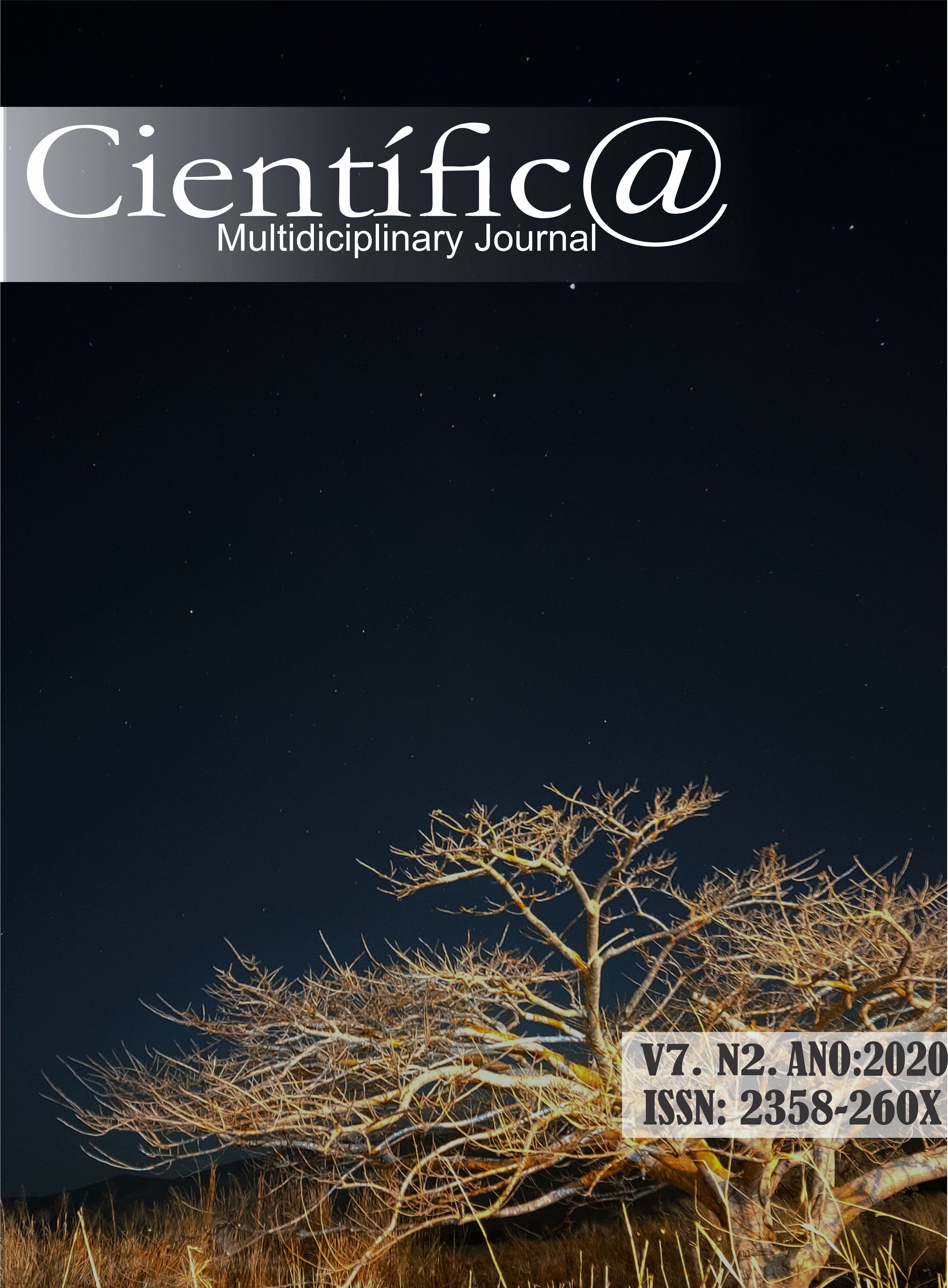BIOCHEMICAL STUDY OF CUPUAÇU FERMENTATION (THEOBROMA GRANDIFLORUM SCHUM
DOI:
https://doi.org/10.37951/2358-260X.2020v7i2.4561Abstract
This work aimed to evaluate the various biochemical transformations that take place in the cupuaçu seed until it reaches the almond shape, analyzing the fermentation, drying and roasting process, where the behavior of pH, temperature, soluble solids, bioactive compounds (vitamin C, phenolics and flavonoids), antioxidant activity (by the methods of DPPH and ABTs), alkaloids (caffeine and theobromine), hydroxymethylfurfural formation and enzymatic activity (peroxidase and polyphenoloxidase) was verified. During the 168-hour fermentation period, there was a variation in acidity, temperature, a decrease in the amount of °Brix and an increase in pH. A reduction in the amount of bioactive compounds was detected, including: total phenolic compounds from 381.23 to 127.24 mg/100g, flavonoids from 92 to 38.25 mg/100g and vitamin C content from 0.6 to 0.125 mg/100g. Regarding the antioxidant capacity, a decrease was observed during the processing of the seeds until obtaining the roasted almonds, with a reduction of 32.73% in the antioxidant activity by the ABTS method, while in the case of DPPH the reduction was 72%. Alkaloids content in almonds was quantified after drying (theobromine 10.22 mg/g and 3.03 mg/g caffeine) and there was a small reduction when compared to roasted almonds (theobromine 9.14 mg/g and caffeine 2.6 mg/g). The hydroxymethylfurfural content formed from the beginning (6.94 mg / kg) until the roasted almond (33.87 mg / kg) was evaluated. The behavior of the enzymatic activity of polyphenoloxidase (PPO) and peroxidase (POD) was verified during the processing of cupuaçu, observing an increase in the activity of the enzymes and a decrease in their activities after roasting, with a reduction of 96% and 98% for PPO and POD, respectively. The behavior of the Michael-Mentes constant (Km) and the maximum speed of the enzymatic reaction during seed processing was evaluated, finding an increasing affinity between enzymes and phenolic substrates until reaching the last day of fermentation, which due to the conditions of the medium affected the affinity of the enzymes with the substrates. The physical-chemical, macro and micronutrient characterization was performed on roasted almonds, which showed nutritional potential.
Downloads
Published
How to Cite
Issue
Section
License
Esta revista oferece acesso livre imediato ao seu conteúdo, seguindo o princípio de que disponibilizar gratuitamente o conhecimento científico ao público proporciona maior democratização mundial do conhecimento.
A partir da publicação realizada na revista os autores possuem copyright e direitos de publicação de seus artigos sem restrições.
A Revista Científic@ - Multidisciplinary Journal segue os preceitos legais da licença Creative Commons - Atribuição-NãoComercial 4.0 Internacional. 

